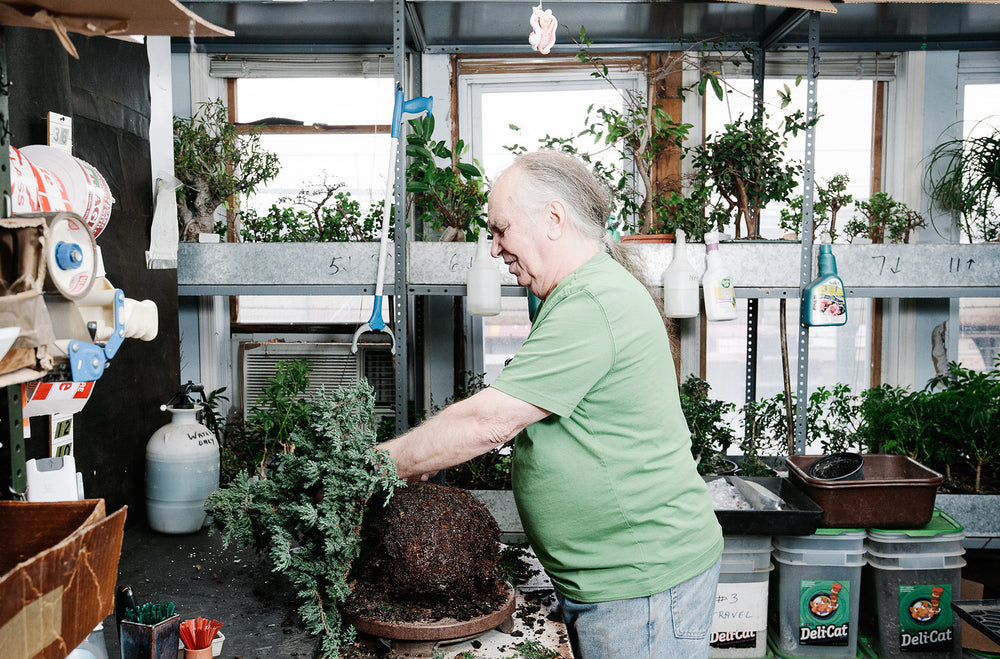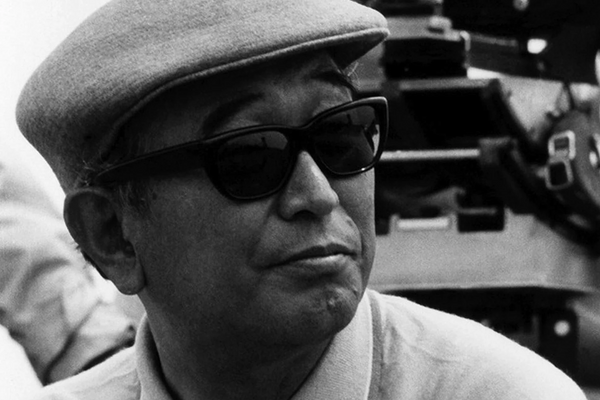Sit on a train long enough for a Manhattan-saddled bridge to fall from sight, and you’ll quickly find yourself in neighborhoods that have yet to be cc’d on citywide mass gentrification email blasts. Contrary to popular doctrine, Bushwick and Bed-Stuy do not define a borough, much in the way that Biggie Smalls, the Brooklyn Nets, and Bernie Sanders do not end the conversation on where Brooklyn begins and ends. Paul Graviano has been using large scissors to cut small trees in Brooklyn since 1964. To say nothing of Vietnam, the civil rights movement, or Beatlemania, it is sufficient to state that in the 52 years that have since passed almost everything in America has changed – everything, perhaps, besides a slowly crumbling second floor workshop in Brooklyn where tiny trees are twisted, pruned, potted, and sold within the guidelines of Japanese tradition.


Standing at a proud 5’9” inches in Jimmy Carter era Sears washed denim and a slightly stained t-shirt, Paul Graviano wears his hair tied behind his head in a pony tail, holds a degree in linguistics from Spike Lee’s New York accent orthodoxy and smiles through his eyes. One question about bonsai trees quickly turns into a one-sided 45 minute TED talk with digressions on the right and wrong approaches to life: “I love what I do – I just don’t want to work that hard.”




Enlightening words from a man who’s found a way to spend the past four decades selling shrubs in New York City. His impressive inventory of miniature trees that once lined the shelves of Bonsai of Brooklyn in 1976 have gone through many incarnations: flea market, storefront, cable television, and most recently the world wide web. His website looks like it was coded off the back of a free AOL Internet mailer in the late 90s. As any visitor can quickly attest, it’s a treasure chest for the aspirational at-home tree tender. Paul spends his days carefully watering, pruning, and eventually packing trees into card boxes from the second floor of his Brooklyn home. The small bushes into which he has poured his life’s energy vibrate slightly as the F train rumbles past the window on its way to train stops last remembered in Walter Hill’s 1979 film The Warriors.




Shrink a real park and you get a bonsai forest. Shrink an F train and you get a model train set. When Paul is home and free of his shears he plays with his trains; his 400 foot model train set is the largest private collection within the city. He treats his model trains with the same love and attention to detail with which he develops his trees. Hunched over his train controls, face a lit with the glow of fake fireworks blasting across a Microsoft monitor hovering above his fake Coney Island beach set, Paul Graviano wears the impossibly lopsided grin of a man who not only marches to the beat of his own drum, but has never heard another rhythm.



